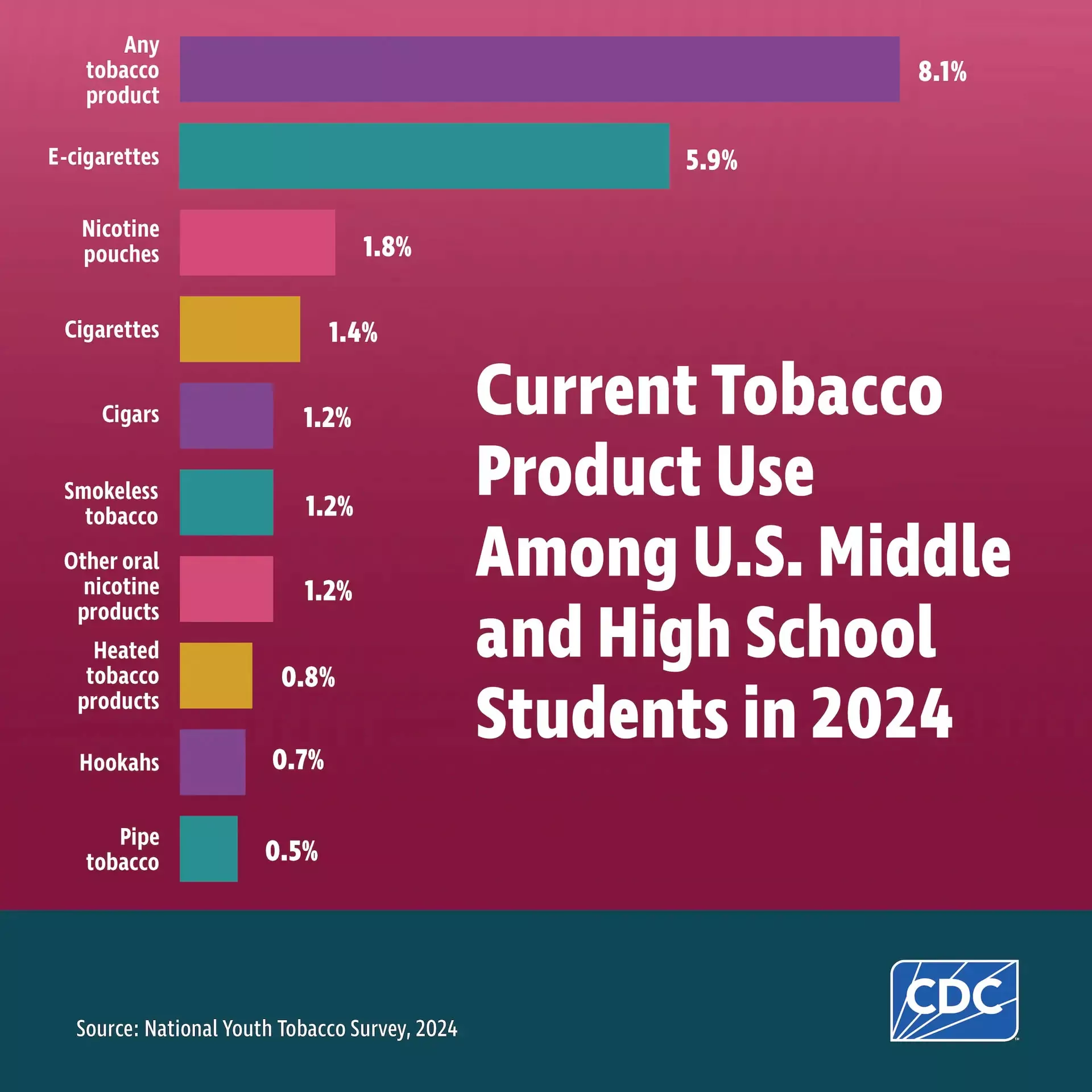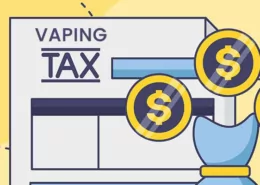Study Finds No Clear Link Between Youth Vaping and Smoking
Study Challenges “Gateway” Theory, Highlights Need for Further Research
A large-scale review of 123 studies, encompassing data from approximately 4 million participants under the age of 29 in the U.S., Canada, and Western Europe, has found no conclusive evidence that vaping leads to cigarette smoking among youth. The findings, published in the journal Addiction, challenge the widely debated “gateway” theory and underscore the need for further research to establish any causal links between e-cigarette use and smoking initiation.
Conflicting Evidence and Interpretation Challenges
The study, led by researchers from the University of Oxford and the University of Massachusetts Amherst, analyzed data from a diverse range of sources, revealing a complex picture with multiple possible interpretations. Some studies suggested an association between increased vaping rates and declining cigarette smoking rates among youth, while others showed conflicting results or even the opposite effect.
Jamie Hartmann-Boyce, assistant professor of health policy and management at the University of Massachusetts Amherst and senior author of the review, notes that the data can be interpreted in various ways. “Some—but not all—evidence from our study possibly suggests the opposite—that vaping may contribute to declines in youth smoking, particularly in the U.S.,” she explains.
The researchers emphasize the challenges in determining a causal relationship between vaping and smoking, given the ethical constraints of conducting randomized controlled trials with adolescents. While individual-level data indicates that young people who vape are more likely to smoke cigarettes later compared to those who never vaped, it remains unclear whether vaping directly causes this transition or if these individuals would have become smokers regardless.
Long-Term Decline in Youth Smoking Rates
Despite concerns about the potential impact of youth vaping on smoking initiation, cigarette smoking among young people has been steadily declining for years. Data from the CDC shows a sharp drop in high school students who reported smoking in the past 30 days—from 15.8% in 2011 to just 1.7% in 2024.

Hartmann-Boyce suggests that while the causes of this decline are not entirely clear, the available data does not support the idea that youth vaping is driving a widespread increase in smoking initiation. “It’s difficult to argue that—in the U.S. population—youth vaping is en masse causing kids to smoke. The data doesn’t support that so far,” she notes.
Implications for Public Health Policy
The findings of this comprehensive review have significant implications for public health policy and the ongoing debate surrounding the regulation of e-cigarettes. If vaping were proven to encourage smoking among young people, it would provide a strong argument for tighter restrictions on e-cigarette access. However, previous research from Hartmann-Boyce’s team indicates that nicotine e-cigarettes can be an effective tool for helping adult smokers quit.
Policymakers face the challenge of striking a balance between reducing youth vaping while preserving access to potentially less harmful alternatives for adult smokers. The study’s authors emphasize the need for further research to establish any causal links between vaping and smoking and to inform evidence-based policies that prioritize public health outcomes.
While the long-term effects of vaping remain unclear, the current evidence does not conclusively support the idea that youth vaping drives cigarette smoking. As the scientific community continues to investigate this complex relationship, policymakers must navigate the evolving landscape of tobacco harm reduction strategies to protect the health and well-being of both youth and adult populations.
- Vaping Laws in Maryland – Age, Flavors Ban, Tax & Rules - June 20, 2025
- Belgium Calls for EU-Wide Ban on Flavored E-Cigarettes - June 20, 2025
- Nicotine Pouches Key to Sweden’s Smoke-Free Success for Women - June 20, 2025









